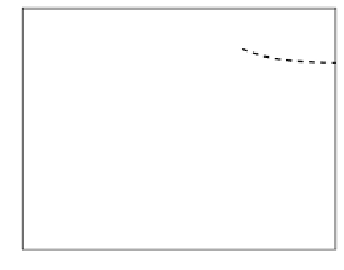Information Technology Reference
In-Depth Information
0.8
0.9
P
e
(x'), H
S
(x')
P
e
(x'), H
S
(x')
0.8
0.7
0.7
0.6
0.6
0.5
0.5
0.4
0.4
0.3
0.3
0.2
0.2
0.1
0.1
x'
x'
0
0
−5
0
5
−5
0
5
(a)
(b)
0.9
0.9
P
e
(x'), H
S
(x')
P
e
(x'), H
S
(x')
0.8
0.8
0.7
0.7
0.6
0.6
0.5
0.5
0.4
0.4
0.3
0.3
0.2
0.2
0.1
0.1
x'
x'
0
0
−5
0
5
−5
0
5
(c)
(d)
Fig. 4.3
H
S
(dashed line) and
P
e
(solid line) plotted as functions of
x
in a two-
class Gaussian problem. Corresponding minima (maximum for
H
S
in d)) are marked
with vertical lines. Taking a) as reference where
μ
−
1
=
−
2
,
μ
1
=0
,
σ
−
1
=
σ
1
=1
and
p
=
q
=0
.
5
, one has: b)
p
=0
.
2
;c)
σ
−
1
=2
;d)
μ
−
1
=
−
1
.
d
dx
R
MSE
(
x
)=0
f
X|−
1
(
x
)=
f
X|
1
(
x
)
.
⇒
(4.23)
Thus, the MMSE procedure produces an optimum
x
corresponding to the
intersection of
f
X|−
1
with
f
X|
1
, which happens to be the min
P
e
solution.
2. Quadratic Rényi EE risk
ln
e
P
E
(
e
)
.
R
R
2
EE
(
x
)
H
R
2
(
x
)=
≡
−
(4.24)
The information potential is then
V
R
2
(
x
)=exp(
H
R
2
(
x
)) =
P
2
P
1
)
2
+
P
1
−
−
1
+(1
−
P
−
1
−
(4.25)
whose maximizing
x
will minimize
H
R
2
(
x
).Wehave:















































































































































